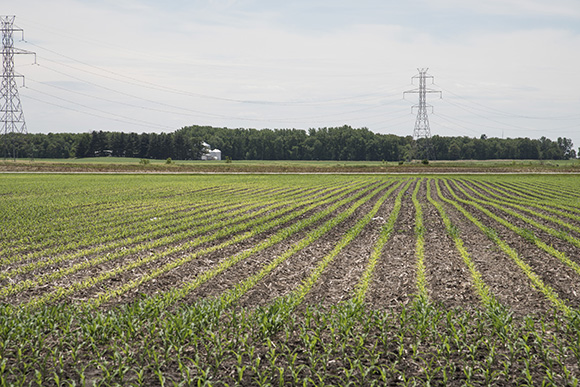Now that cleaner air has reduced the amount of sulfur acquired by plants and soil from rainfall or adsorbed directly from the air, sulfur deficiency of crops appears to be increasing. Sandy soils with low organic matter are most susceptible to sulfur deficiency. Sulfur deficiency shows up as pale yellow foliage in corn, soybean, small grains, and alfalfa. Corn leaves can show striping instead of an overall yellowing, especially when plants are young. Visual symptoms of sulfur deficiency can be confused with other nutrient deficiencies and pest problems so plant and soil testing is the best way to diagnose sulfur deficiency . More details on sulfur deficiency and ways to avoid or overcome deficiency can be found here: SULFUR DEFICIENCY.

Variability of field yellowing may indicate sulfur deficiency.


